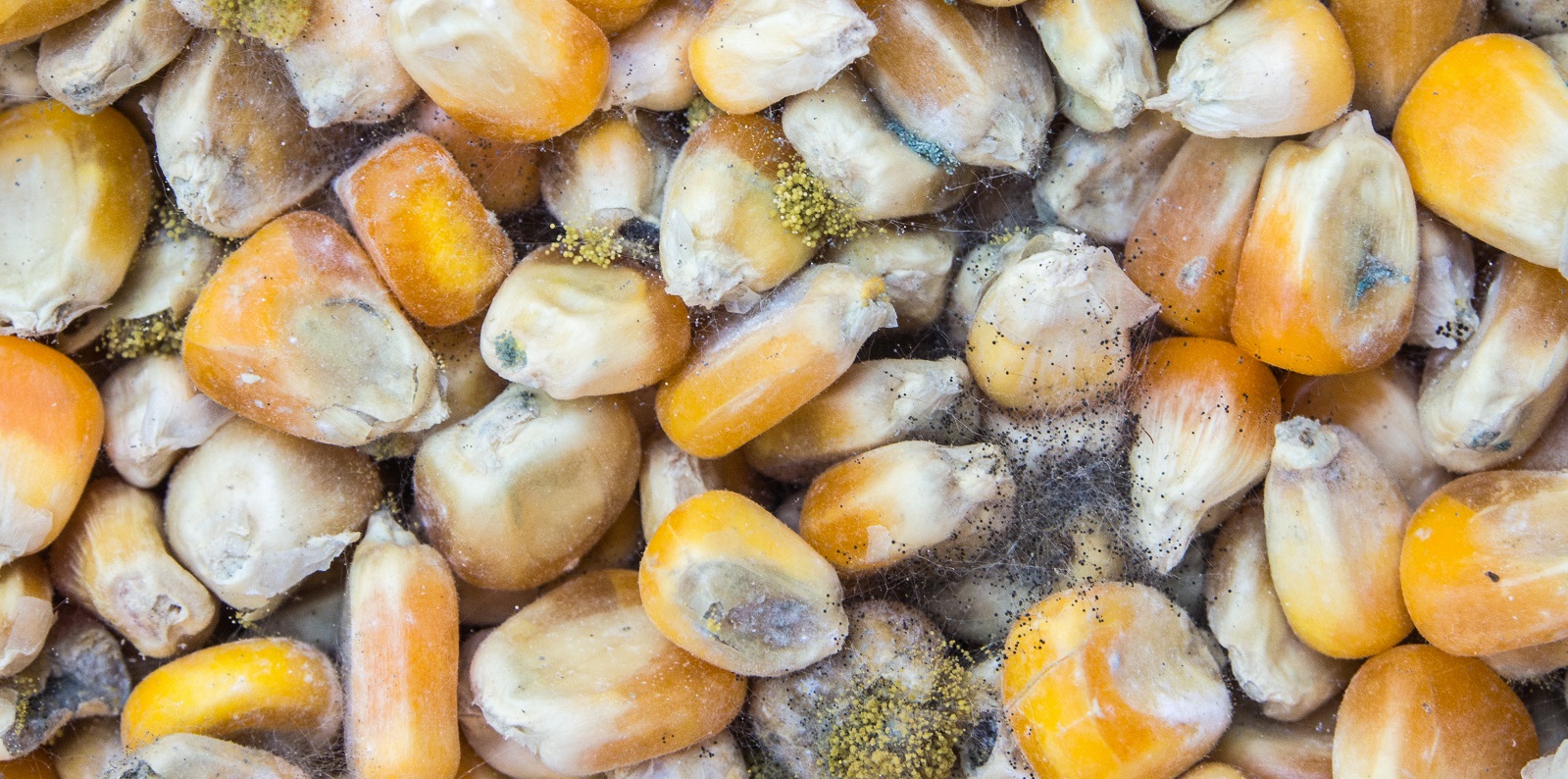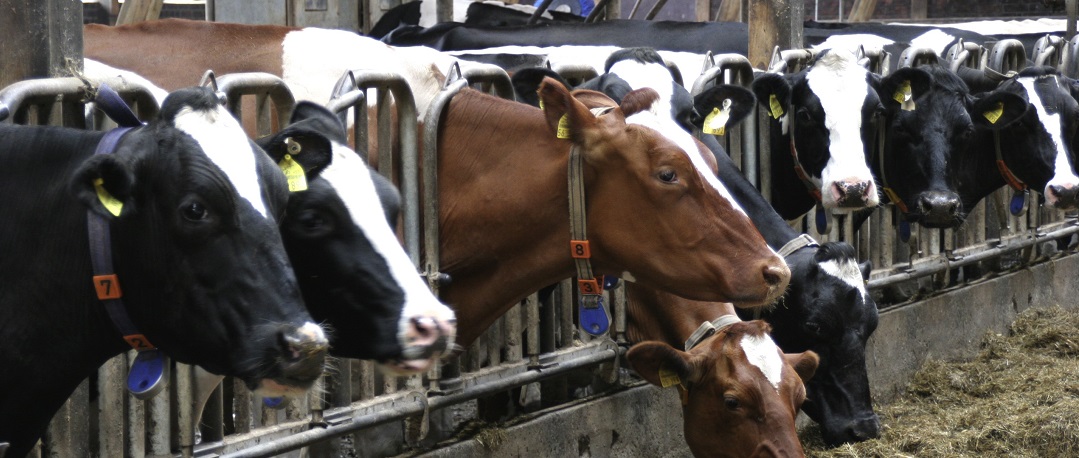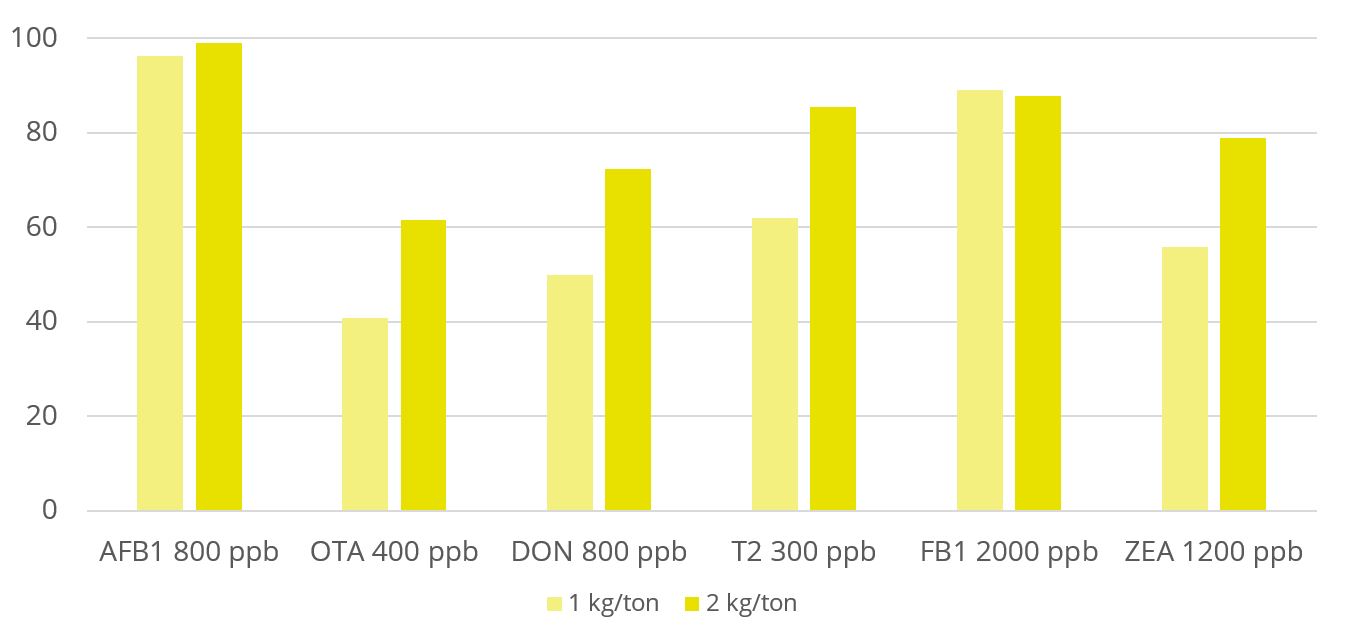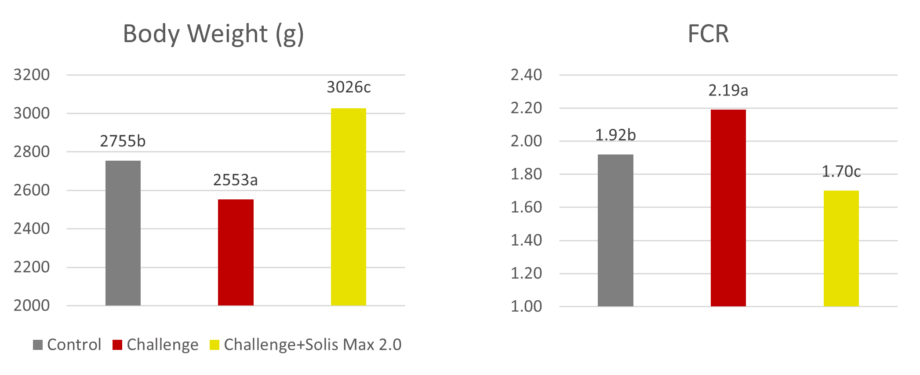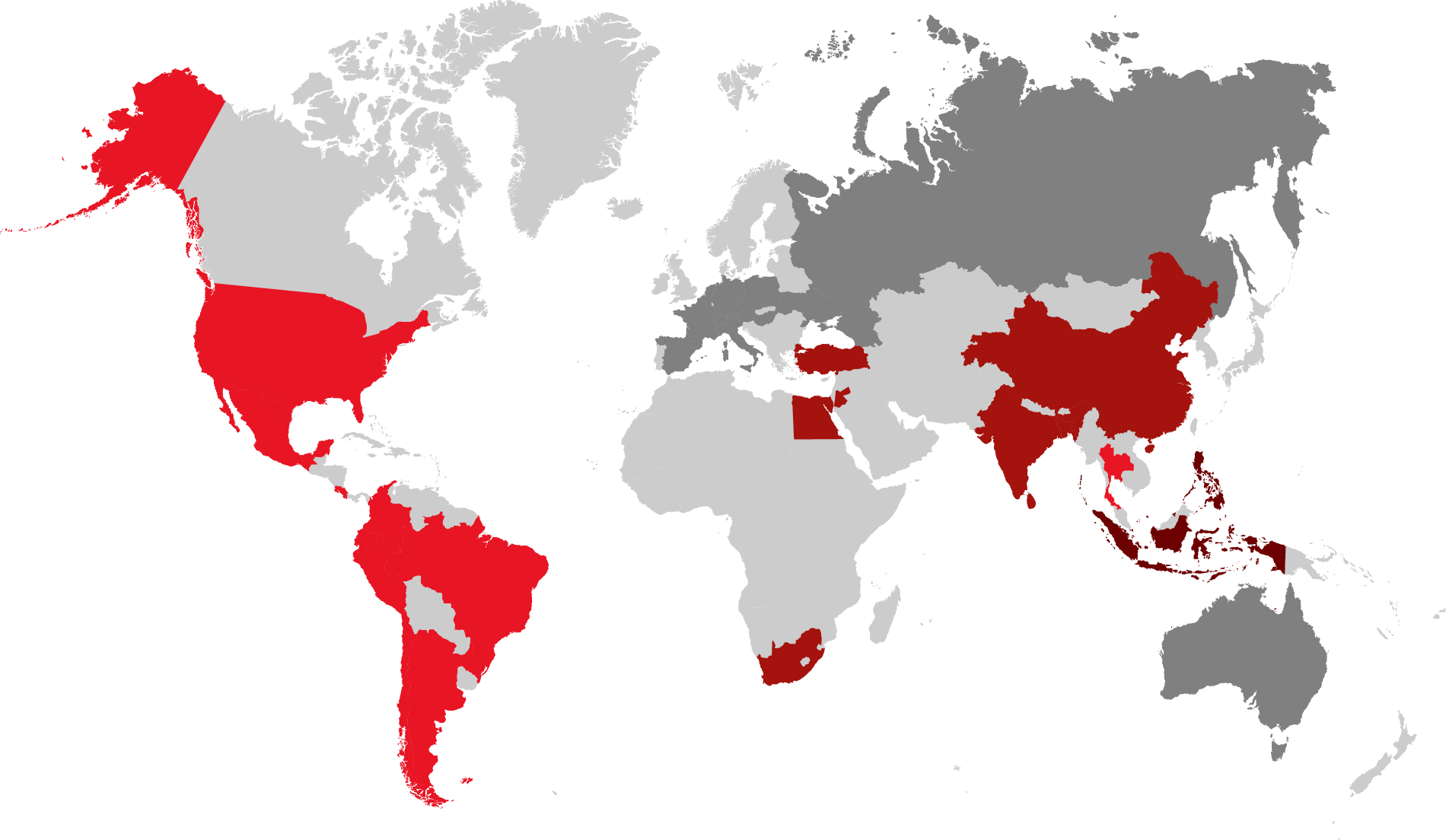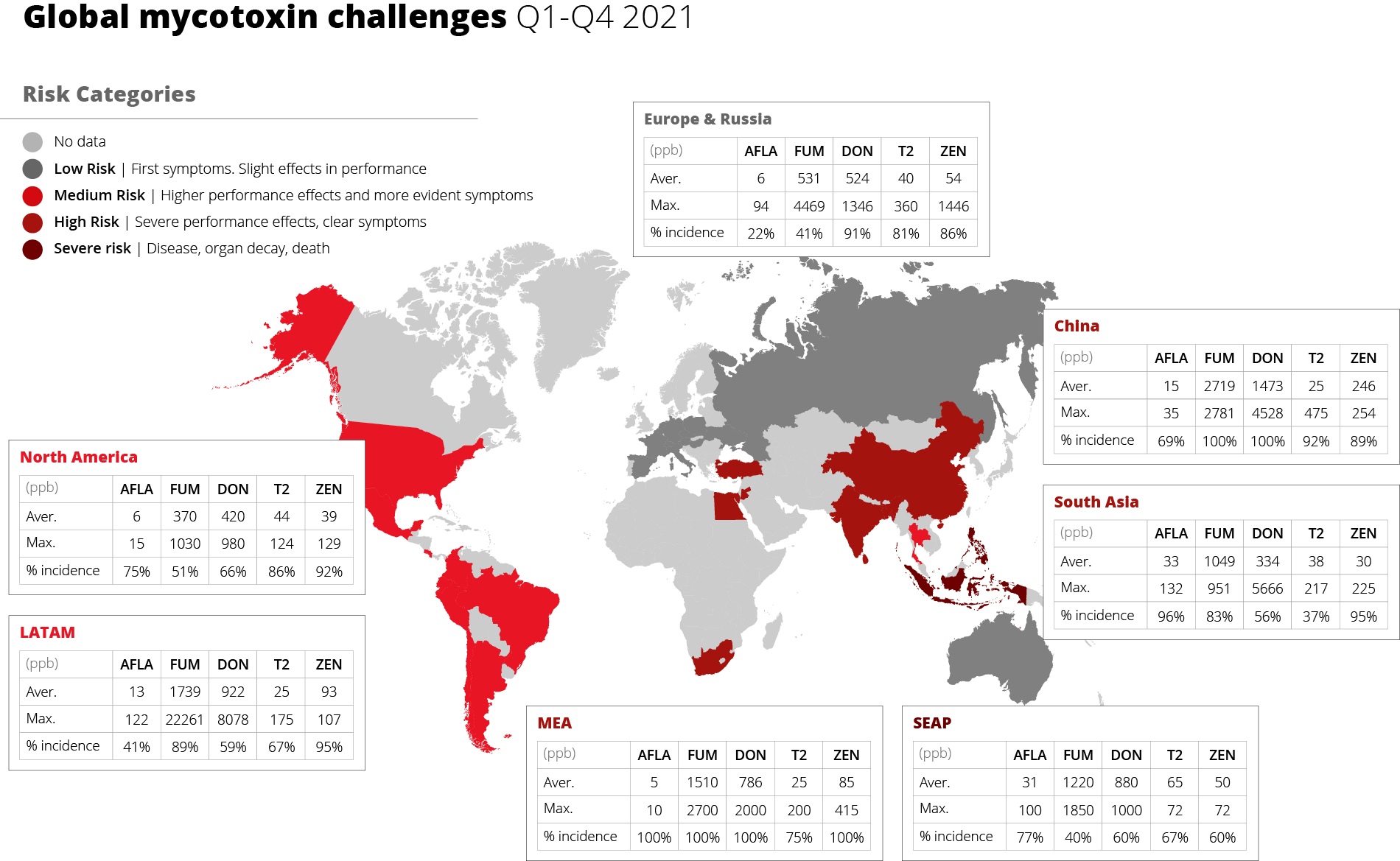Mycotoxins affect intestinal health and productivity in broiler breeders
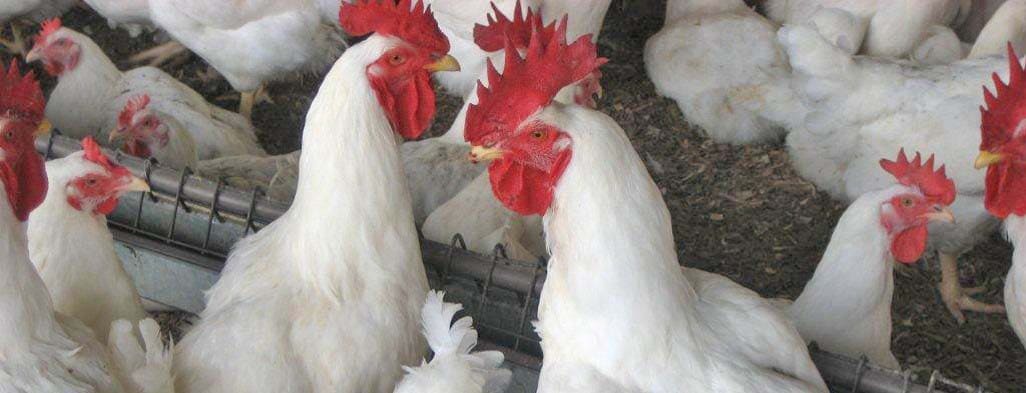
By Han Zhanqiang, Poultry Technical Manager, EWN China
Poultry meat accounts for more than one-third of global meat production. With increasing demand levels, the industry faces several challenges. Among them is the continuous supply of day-old chicks, which is affected by various issues. Mitigation strategies should be taken to ensure the supply of good quality day-old chicks to production farms.
Fast-growing broilers versus fit breeders
The poultry industry is challenged by the broiler-breeder paradox: on the one hand, fast-growing broilers are desirable for meat production. On the other hand, the parents of these broilers have the same genetic traits, but in order to be fit for reproduction, their body weight should be controlled. Thus, feed restriction programs, considering breeder nutritional requirements, are necessary to achieve breed standards for weight, uniformity, body structure, and reproductive system development, determining the success of day-old chick production.
Mycotoxins affect breeder productivity
During the rearing period, gut health problems such as coccidiosis, necrotic enteritis, and dysbiosis affect flocks. Also during the laying period, breeder flocks are also susceptible to disturbances in gut health, especially during stressful periods, leading to reduced egg production and an increase in off-spec eggs. One measure to restrain these challenges is the strict quality control of the feed. In this context, contamination with mycotoxins is an important topic. However, due to the nature of fungal contamination and limitations of sampling procedures, mycotoxins may not be detected or may be present at levels considered low and not risky.
Existing studies on mycotoxins in breeders indicate that mycotoxins can cause varying degrees of reduction in egg production and hatchability and are also associated with increased embryonic mortality. Recent studies have shown that low levels of mycotoxins interact with other stressors and may lead to reduced productivity. These losses are often mistaken for normal breeder lot variation. However, they cause economic losses far greater than normal flock-to-flock variability.
Mycotoxins impair the functionality of the gut
Low mycotoxin levels affect gut health. Individually and in combinations, mycotoxins such as DON, FUM, and T2 can impact gut functions such as digestion, absorption, permeability, immunity, and microbial balance. This is critical in feed-restricted flocks because it decreases body weight and uniformity, and in laying animals, egg production and egg quality can be reduced. Absorption of calcium and vitamin D3, which are critical for eggshell formation, depends on gut integrity and the efficiency of digestion and absorption. These factors can be adversely affected by even low mycotoxin levels: eggshells can become thin and brittle, thereby reducing hatching eggs and increasing early embryo mortality.
Prevention is the key to success in day-old chick production, therefore:
- avoid the use of raw materials with known mycotoxin contamination.
- use feed additives prophylactically, especially with anti-mycotoxin and antioxidant properties.
Prevention is an alternative approach to assure health and productivity in -many times unknown- mycotoxin challenges.
 Figure 1: Effect of mycotoxins on eggshell quality and embryo death (Caballero, 2020)
Figure 1: Effect of mycotoxins on eggshell quality and embryo death (Caballero, 2020)
University trial shows anti-mycotoxin product improving performance
A recent study by the University of Zagreb confirmed that long-term (13 weeks) exposure to feed contaminated with mycotoxins has an impact on egg production performance – a challenge that could be counteracted by using an anti-mycotoxin product.
The negative control (NC) was offered feed without mycotoxins. In contrast, the challenged control (CC), as well as a third group, received feed contaminated with 200ppb of T2, 100ppb of DON, and 2500ppb of FMB1. To the feed of the third group, an anti-mycotoxin feed additive (Mastersorb Gold, EW Nutrition) was given on top (CC+MG).
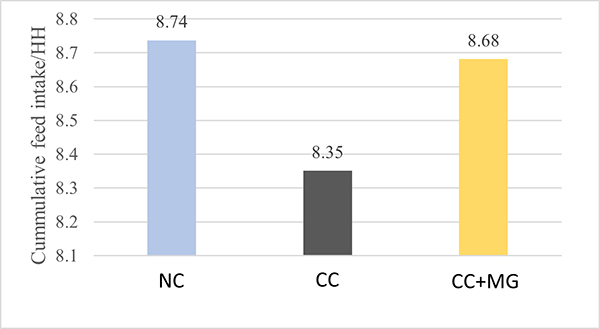 Figure 2: Influence of mycotoxins on feed intake and the effect of the anti-mycotoxin product Mastersorb Gold
Figure 2: Influence of mycotoxins on feed intake and the effect of the anti-mycotoxin product Mastersorb Gold
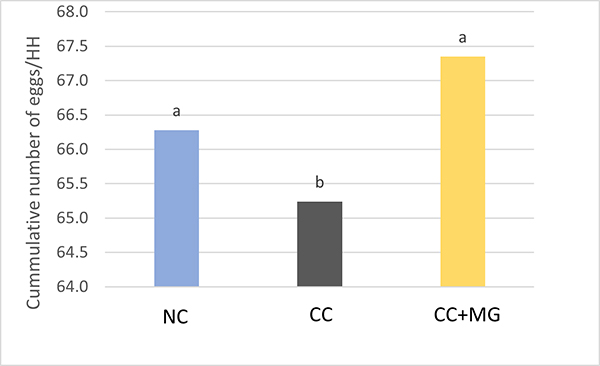 Figure 3: The effect of mycotoxins on the cumulative number of eggs and the compensating effect of Mastersorb Gold
Figure 3: The effect of mycotoxins on the cumulative number of eggs and the compensating effect of Mastersorb Gold
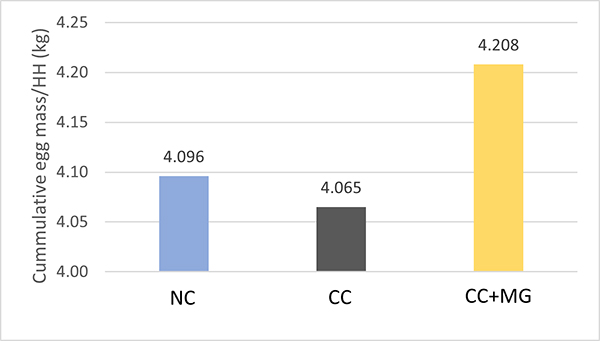 Figure 4: The impact of mycotoxins on the cumulative egg mass and the countereffect of Mastersorb Gold
Figure 4: The impact of mycotoxins on the cumulative egg mass and the countereffect of Mastersorb Gold
As expected, the contaminated feed reduced feed intake, egg production, and egg weight (Fig. 2-4). Moreover, the liver and gut were affected which was evidenced in histopathological lesion scores of the organs: the control group had the lowest score, followed by the group fed Mastersorb Gold. The challenged group without any anti-mycotoxin product scored the highest.
Breeders are susceptible to mycotoxins and need our support
Broiler breeders and day-old chick production can be affected by long-term exposure to mycotoxins, which often exceeds the tolerance range of average flocks. To reduce or even prevent the potential impact of mycotoxins, a comprehensive management strategy is crucial. This includes responsible raw material procurement, storage, and feed processing leading to high feed quality, and the consideration of breeders’ nutrient demands. The inclusion of highly effective products to manage mycotoxin risk is an additional tool to maintain breeder performance.
